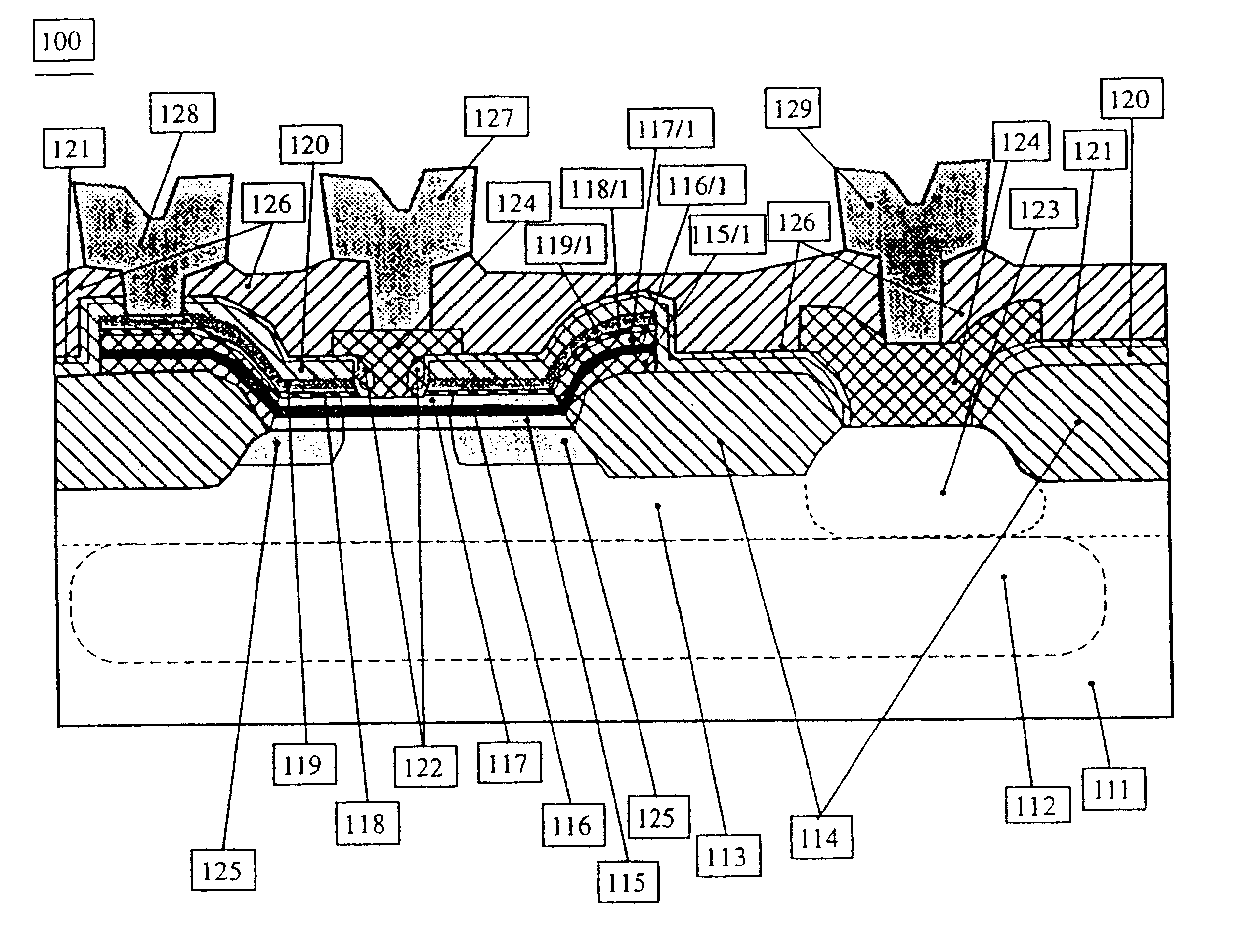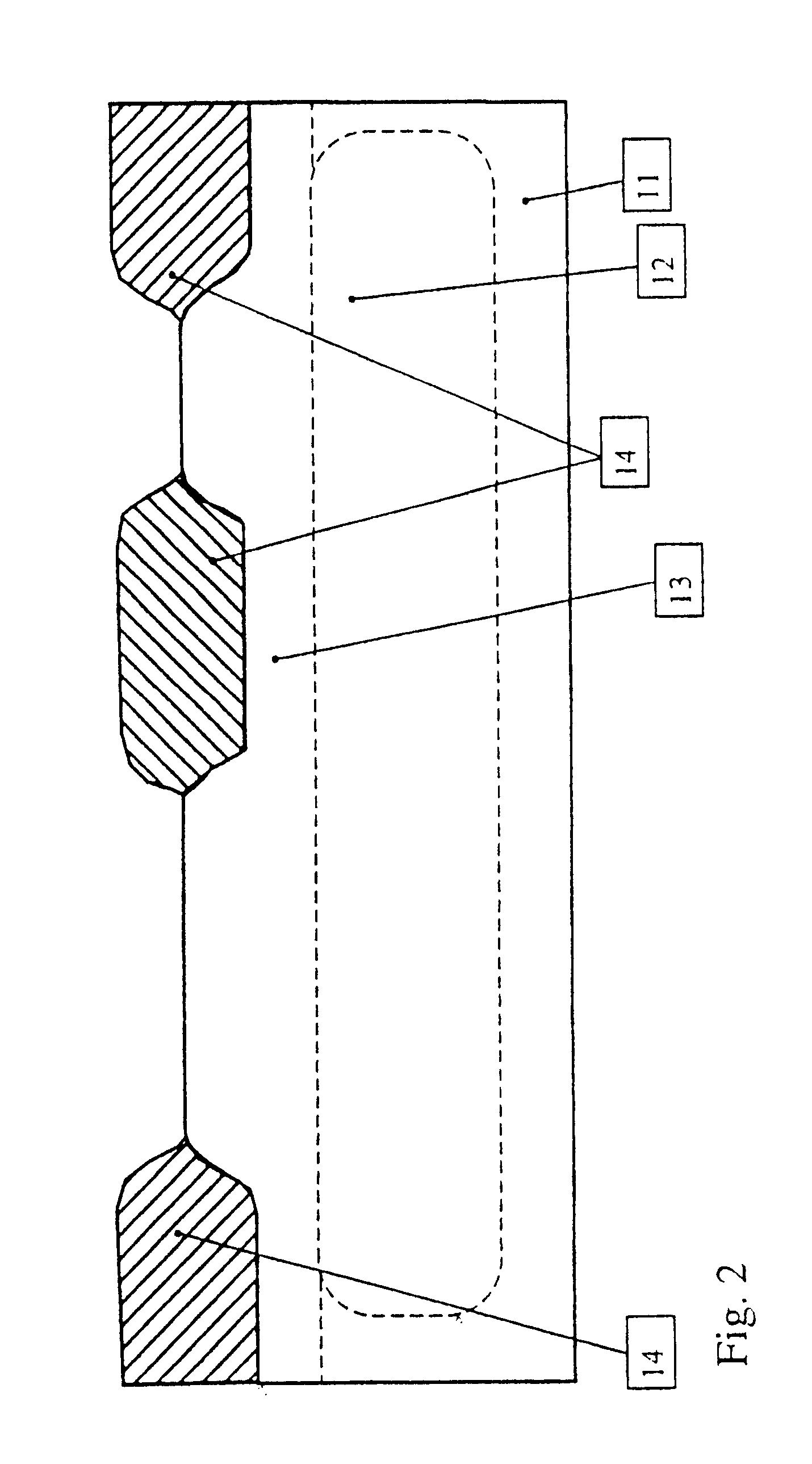Bipolar transistor and method for producing same
a bipolar transistor and transistor technology, applied in transistors, basic electric elements, electrical devices, etc., can solve the problems of increased processing complexity and contact resistance, surface roughness, and heightened contact resistance, so as to reduce external base resistance, reduce base-collector capacitance, and reduce external base resistance
- Summary
- Abstract
- Description
- Claims
- Application Information
AI Technical Summary
Benefits of technology
Problems solved by technology
Method used
Image
Examples
example 2
FIG. 4 depicts a second embodiment of a bipolar transistor 100 in accordance with the invention. In a manner similar to the first example, there has been formed a collector region of circuit type 11 on the semiconductor substrate region 111 of circuit type 1. Doping of the collector consists of a highly doped buried layer 112 and a lesser doped epitaxial layer 113. An insulating region 114 separates the bipolar transistor from other components not shown in the drawing as well as collector connection region from the active transistor region. A buried implant 123 may optionally be applied for reducing the resistance between the contact layer 124 made of highly doped poly-silicon and the buried layer 112.
A sequence of epitaxial layers consisting of a buffer layer 115, in situ doped base layer 116 of circuit type 1, the weakly doped intermediate layer 117, an etch stop layer 118 and, finally, a preferably doped cover layer 119 (of the circuit type of the base), covers the emitter region...
first embodiment
This leads to the formation of the surface relief shown in FIG. 6. The collector connection region is then opened by photolithographically structuring of a lacquer mask, and the buried implant is incorporated. Prior to removing this lacquer mask the oxide layers 120, 121 in the collector connection region are preferably wet-chemically etched. To fabricate a complete transistor, the process is then continued as in the
PUM
 Login to View More
Login to View More Abstract
Description
Claims
Application Information
 Login to View More
Login to View More - R&D
- Intellectual Property
- Life Sciences
- Materials
- Tech Scout
- Unparalleled Data Quality
- Higher Quality Content
- 60% Fewer Hallucinations
Browse by: Latest US Patents, China's latest patents, Technical Efficacy Thesaurus, Application Domain, Technology Topic, Popular Technical Reports.
© 2025 PatSnap. All rights reserved.Legal|Privacy policy|Modern Slavery Act Transparency Statement|Sitemap|About US| Contact US: help@patsnap.com



